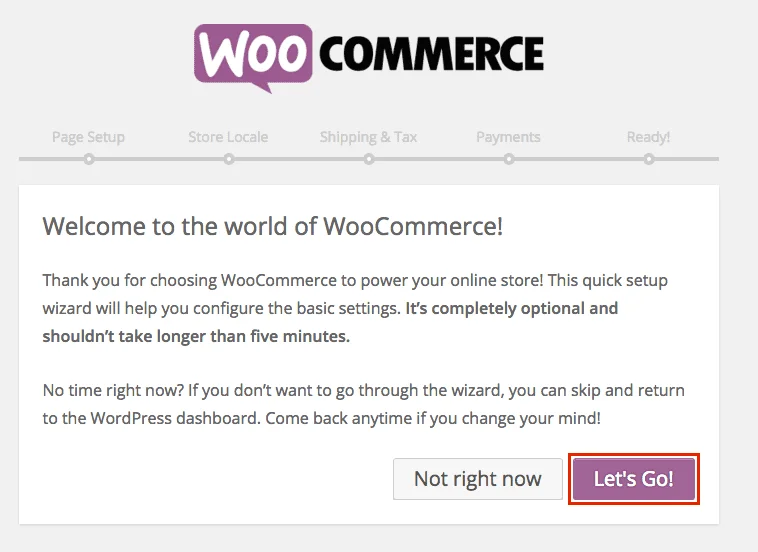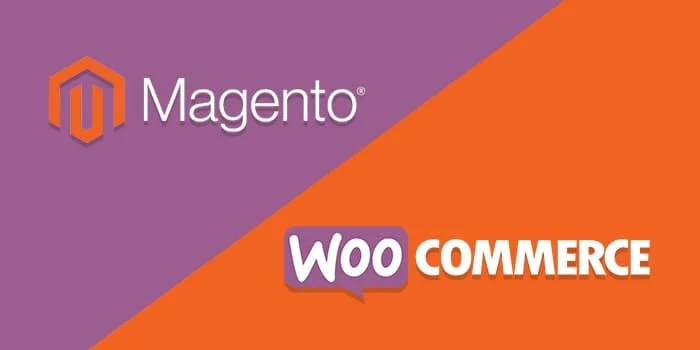Creating an e-commerce website for your business is now child’s play with the wide array of website builders and top hosting platforms available today. But running an e-commerce store smoothly and managing its various verticals like catalogs, orders, purchases, payments, stock, etc. demands much more than just building a website. This is where you need specially designed software to run your business and all its aspect from one place.
Two of the most recurrent names you will come across during your quest for the best e-commerce platforms are Magento and WooCommerce. In this article, we will help you to know each of them better and choose the one that fits your business the best.
About Magento
Magento is an open-source e-commerce platform that is now part of the Adobe Experience Cloud (since 2018). With more than 250,000 merchants trusting Magento worldwide, it owns 12% of the e-commerce market [Source]. Its customer base includes huge names in the industry like Ford, Christian Louboutin, Bulgari, Pepe Jeans, etc.
What can Magento do for you?
- Page Builder: Build creative pages for your shoppers with images, videos, and banners with its drag-and-drop content management interface. Magento???s intuitive page builder makes management of your site easier than ever before with its features like in-lining editing, reusable dynamic blocks, and ready-to-use templates.

- Order & Inventory Management: Magento is a boon for large businesses with multiple brands, stores, sites, warehouses, etc. since it allows tracking and managing inventories and fulfilling orders across multiple channels as it supports BOPIS and single and multi-address orders.
- Cloud delivery: Your store will work better with Magento’s pre-integrated cloud services that can simplify the technology stack, reduce TCO and accelerate growth. You can also choose between Amazon Web services or Microsoft Azure as the cloud infrastructure.
- Progressive Web Apps (WPA): Magento’s PWA Studio is a futuristic technology that enables you to give your customers an app-like shopping experience thus boosting engagements and conversion rates. Moreover, using PWA studio with Magento eliminates the need for buying a separate cloud hosting for the storefront and back-end thus saving cost.
- Extensions: Various extensions allow seamless integrations to boost your sales worldwide via Magento Marketplace, prominent among them being the free Amazon sales channel extension, Stripe, LiveChat, and over a thousand other free and paid extensions and themes for Marketing, Accounting & Finance, Security, Shipping & fulfillment, Site optimization, etc.
Pros:
- Loaded with features tailor-made for medium and large businesses
- Commendable UI/UX design
- Magento Patches (free security scan tool) for added online security
Cons:
- Harder to learn for regular users without coding experience
- Expensive, especially for small businesses
About WooCommerce
WooCommerce is one of the most popular open-source WordPress plugins for e-commerce to assist small to large merchants in managing their WordPress business sites. It is currently owned by Automattic, the operator of WordPress.com.
According to the latest statistics around 5+ million online stores are actively using WooCommerce making it the top e-commerce platform with 26% of online market share, leaving behind Magento and Shopify with huge margins.
How to setup WooCommerce to your WordPress Website
- Login to WordPress, go to the ‘Plugins’ menu, and choose the ‘Add New’ option
- Search for WooCommerce and click ‘Install Now’. Once installation is complete choose ‘Activate Now’ to initiate the set-up wizard
- Follow the instructions by setting up Wizard to fill in the details of your store.
- Once you are done setting up your store information, you are ready to add new products to your catalog and publish them.

What can you do with WooCommerce?
- Order management: The WooCommerce Dashboard lets you manage orders from one place using its automated tax calculations, live shipping rates from various carriers and the option to print labels at home.
- Customization: With WooCommerce, your store will look like the one you have always dreamt of. Choose from a large number of free as well as paid themes; add product variations, subscription options for customers, etc.
- Add-ons and integrations: It comes with a large number of free and paid extensions to enhance your store for marketing, payments, accounting, trend analysis, etc.
- Global access: Take your store out to any corner of the world with WooCommerce by attracting more customers with multi-lingual content in 24 languages and multi-currency support.
- Jetpack for security: This specially designed feature protects your site from malware, spam, and brute force attacks by continuous scanning, email notifications in case of suspicious activity, and real-time backups of your data.
- Reports and analysis: WooCommerce is partnered with Google Analytics to analyze trends and growth
Pros:
- Easy to use, even without much technical know-how
- Budget-friendly for small businesses
- A large number of free as well as premium themes to choose from
Cons:
- Limited in features as your business grows larger
- No Phone, chat, or email support is available
Comparison: Let the battle begin!!!
Let us weigh WooCommerce against Magento with respect to the following criteria and see who wins the spot for the platform of your business store:
- Ease-of-Use
WooCommerce undoubtedly scores the point here since it???s a WordPress plugin and hence can be installed and configured even by a non-technical person. It also comes with a set-up wizard to help you get started with WooCommerce in no time.
On the other hand, Magento has a steep learning curve and can be utilized to its maximum potential only with the help of a professional developer (and hence, added cost).
- Scalability
Magento’s paid business and Enterprise editions are pre-equipped with features to scale your business that can handle large orders and traffic spikes effortlessly as your business grows. However, to optimize your site accordingly with respect to caching, backups, firewalls, etc. you need help from Magento experts which comes with additional cost.
WooCommerce is more suited for smaller enterprises that need a quick and easy start with a decent amount of features. But at some point, your business may outgrow WooCommerce because of its technical limitations.
Thus we give this point to Magento.
- Performance and Speed
This would be a tough decision since both the platforms are equally efficient in performance but the final output depends more on many other factors such as Caching, image optimization, Magento Hosting provider, use of CDN, etc. Hence, we don???t have a clear winner here.
- Add-ons & extensions
Both WooCommerce and Magento come with a large number of integrations, Add-ons, and extensions. However, WooCommerce cannot stand against the feature-loaded Magento extensions for Payment, security, marketing, accounting, shipments, etc. Magento, thus, wins this round.
- Security
Magento once again takes the lead with regard to security with its unique free scanning tool or Magento Patches which is absent in WooCommerce.
- Pricing
Though Setting up WooCommerce is completely free, you will have to include the cost of Woocommerce hosting, domain name, SSL certificate, add-ons, extensions, premium themes, etc. to your budget. Magento, on the other hand, offers two versions- Community Edition, which is free but with limited features and no support; and the Enterprise version which has advanced features and cloud hosting included but the prices can burn your pocket. Even with Magento’s Community edition, the costs go much higher since it requires at least a VPS or cloud hosting, paid extensions, and professional developers to access full features.
Thus, WooCommerce even with all the costs is much cheaper as compared to Magento’s Community Edition.
And the final winner is!!!
So apparently Magento bags maximum scores in our e-commerce battle, but before rushing into your decision, do remember that you must choose the one which is right for your business.
If yours is a small-scale venture with a low budget or no technical team, then definitely WooCommerce will fit you the best.
On the other hand, if you can spare some extra money to afford Magento, you can enjoy its advanced features to grow your business further.
 Get Listed
Get Listed 
